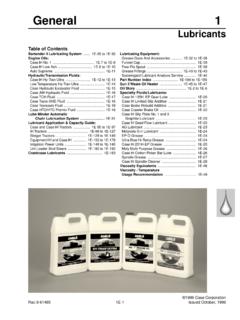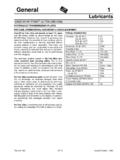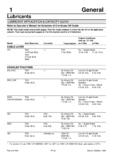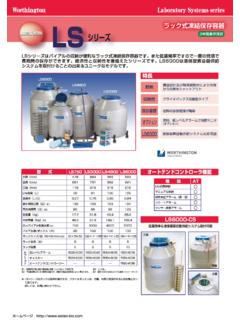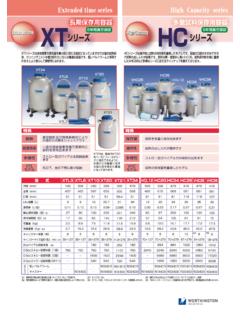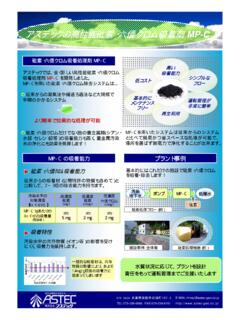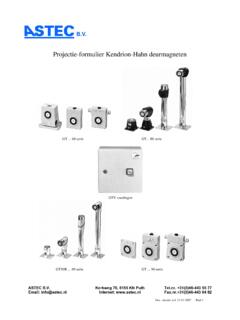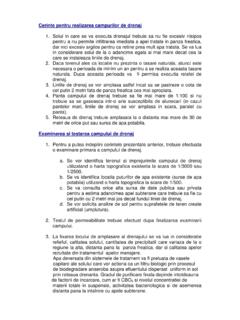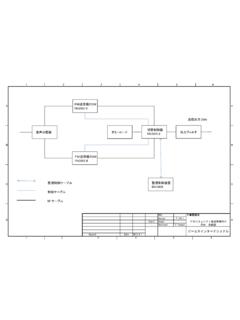Transcription of MATERIAL SAFETY DATA SHEET - Viscosity
1 Page 1 of 6 ASTEC HYDRAULIC TRANSMISSION FLUID Revision Date: 04/21/06 Replaces: 01/26/06 MATERIAL SAFETY data SHEET SECTION 1 PRODUCT AND COMPANY IDENTIFICATION ASTEC HYDRAULIC TRANSMISSION FLUID CAS Number: Mixture SYNONYMS: Tractor Hydraulic Oil Company Information FL Viscosity Oil Company 600-H Joliet Road Willowbrook, IL 60527 Transportation Emergency Response CHEMTREC (800) 424-9300 Product Information MSDS Requests: (630) 850-4000 Website: Product Information: (630) 850-4000 Website.
2 SECTION 2 COMPOSITION / INFORMATION ON INGREDIENTS Components Hazardous (Y/N) CAS Number Amount Base Lubricating Oils No Mixture 80-90 % Detergent / Inhibitor System No Mixture 5-10% Viscosity Index Improver No Mixture 1-15% Pour Point Depressant No Mixture <1 % Silicone Antifoam Additive No Trade Secret <1% SECTION 3 HAZARDS IDENTIFICATION EMERGENCY OVERVIEW - MAY CAUSE EYE DISCOMFORT UPON DIRECT CONTACT - MAY CAUSE MINOR SKIN IRRITATION UPON PROLONGED CONTACT IMMEDIATE HEALTH EFFECTS Eye contact: May cause mild, short-lasting discomfort to eyes, based on testing of similar products and/or components.
3 Skin contact: Negligible irritation to skin at ambient temperatures. Prolonged or repeated contact may result in oil acne which is characterized by blackheads with possible secondary infection. Injection of pressurized hydrocarbons under the skin can cause inflammation and swelling, as well as Page 2 of 6 ASTEC HYDRAULIC TRANSMISSION FLUID Revision Date: 04/21/06 Replaces: 01/26/06 severe, permanent tissue damage. The initial wound at the injection site may not appear to be serious at first, but, if left untreated, could result in disfiguration or amputation of the affected part. Inhalation: This product has a low vapor pressure and is not expected to present an inhalation hazard at ambient conditions.
4 Caution should be taken to prevent the formation of an aerosol or misting of this product. The permissible exposure limit (PEL) and threshold limit value (TLV) for this product as oil mist is 5 mg/m3. Exposures below 5 mg/m3 appear to be without significant health risk. The short-term exposure limit for this product as an oil mist is 10 mg/m3. Ingestion: This product is relatively low toxicity by ingestion. This product has laxative properties and may result in abdominal cramps and diarrhea. DELAYED OR OTHER HEALTH EFFECTS Cancer: None of the components in this MATERIAL are listed as carcinogens by IARC, NTP, ACGIH or OSHA. Other: On rare occasions, prolonged and repeated exposure to oil mist poses a risk of pulmonary disease such as chronic lung inflammation. This condition is usually asymptomatic as a result of repeated small aspirations. Shortness of breath and cough are the most common symptoms. See Section 11 for additional information.
5 Risk depends on duration and level of exposure. SECTION 4 FIRST AID MEASURES Eye contact: Immediately flush eyes with large amounts of water and continue flushing until irritation subsides. If MATERIAL is hot, treat for thermal burns and take victim to hospital immediately. Skin contact: Remove contaminated clothing. Wash contaminated area thoroughly with soap and water. If redness or irritation occurs, seek medical attention. If MATERIAL is hot, submerge injured area in cold water. If victim is severely burned, remove to a hospital immediately. If MATERIAL is injected under the skin, seek medical attention immediately. Note to physicians: In an accident involving high-pressure equipment, this type of product may be injected under the skin. Immediate treatment at a surgical emergency center is recommended, no matter how small and insignificant the wound may appear. Inhalation: This MATERIAL has a low vapor pressure and is not expected to present an inhalation exposure at ambient conditions.
6 Ingestion: Do not induce vomiting. Seek medical attention. SECTION 5 FIRE FIGHTING MEASURES FIRE CLASSIFICATION: OSHA Classification (29 CFR ): Not classified by OSHA as flammable or combustible. NFPA RATINGS: Health: 1 Flammability: 1 Reactivity: 0 (0-Least, 1-Slight, 2-Moderate, 3-High, 4-Extreme, PPE:-Personal Protective Equipment Index recommendation) FLAMMABLE PROPERTIES: Flash point: 426 F (ASTM D-92 Cleveland Open Cup) Autoignition temperature: > 800 F Flammable (Explosive) limits (% by volume in air) Lower: No data Upper: No data Page 3 of 6 ASTEC HYDRAULIC TRANSMISSION FLUID Revision Date: 04/21/06 Replaces: 01/26/06 Extinguishing Media: Use dry chemical, foam, or carbon dioxide.
7 Special Fire Fighting Procedures: Water may be ineffective but can be used to cool containers exposed to heat or flame. Caution should be exercised when using water or foam as frothing may occur, especially if sprayed into containers of hot, burning liquid. Unusual Fire and Explosive Conditions: Dense smoke may be generated while burning. Carbon monoxide, carbon dioxide, and other oxides may be generated as products of combustion. SECTION 6 ACCIDENTAL RELEASE MEASURES Protective Measures: Eliminate all sources of ignition in vicinity of spilled MATERIAL . Consult Hazards Identification Information in Section 3, Personal Protection information in Section 8, Fire Fighting Measures in Section 5, and Reactivity data in Section 9. Spill Management: Consult health effect information in section III, personal health protection information in section VI, and reactivity data in section VII. Notify appropriate authorities of spill.
8 Contain spill immediately. Do not allow spill to enter sewers or watercourses. Remove all sources of ignition. Absorb with appropriate inert MATERIAL such as sand, clay, etc. Large spills may be picked up using vacuum pumps, shovels, buckets, or other means and placed in drums or other suitable containers. Reporting: Report spills to local authorities and/or the Coast Guard s National Response Center at (800) 424-8802 as appropriate or required. SECTION 7 HANDLING AND STORAGE Do not transfer to unmarked containers. Store in closed containers away from heat, sparks, open flame or oxidizing materials. Fire extinguishers should be kept readily available. See NFPA 30 and OSHA and combustible liquids. SECTION 8 EXPOSURE CONTROLS / PERSONAL PROTECTION HMIS RATINGS: Health: 1 Flammability: 1 Physical Hazards: 0 PPE: See note 1. (0-Least, 1-Slight, 2-Moderate, 3-High, 4-Extreme, PPE:-Personal Protective Equipment Index recommendation) PERSONAL PROTECTIVE EQUIPMENT Eye protection: Eye protection is not required under normal conditions of use.
9 If MATERIAL is handled such that it could be splashed into eyes, wear plastic face shield or splash-proof SAFETY goggles. Skin protection: No skin protection is required for single, short duration exposures. For prolonged or repeated exposures, use impervious clothing (boots, gloves, aprons, etc.) over parts of the body subject to exposure. If handling hot MATERIAL , use insulated protective clothing (boots, gloves, aprons, etc.). Launder soiled clothes. Properly dispose of contaminated leather articles including shoes, which cannot be decontaminated. Respiratory Protection: Respiratory protection is not required under conditions of normal use. If vapor or mist is generated when the MATERIAL is heated or handled, use an organic vapor respirator Page 4 of 6 ASTEC HYDRAULIC TRANSMISSION FLUID Revision Date: 04/21/06 Replaces: 01/26/06 with a dust and mist filter.
10 All respirators must be NIOSH certified. Do not use compressed oxygen in hydrocarbon atmospheres. Ventilation: If vapor or mist is generated when the MATERIAL is heated or handled, adequate ventilation in accordance with good engineering practice must be provided to maintain concentrations below the specified exposure or flammable limits. Other: Consumption of food and beverage should be avoided in work areas where hydrocarbons are present. Always wash hands and face with soap and water before eating, drinking, or smoking. Occupational Exposure Limits (OSHA) Component TWA STEL Base Lubricating Oils 5MG / M3 No data Available Detergent / Inhibitor System No data Available No data Available Viscosity Index Improver No data Available No data Available Pour Point Depressant No data Available No data Available Silicone Antifoam Additive No data Available No data Available Note 1: Employers must determine appropriate PPE for the actual conditions under which this MATERIAL is used in their workplace.
